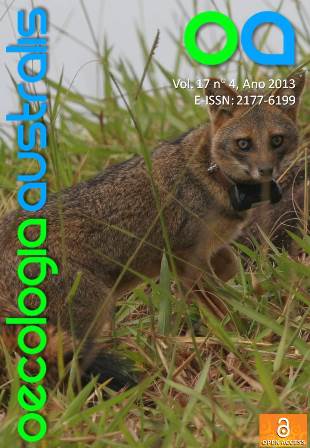FEEDING ECOLOGY OF FIVE NEOTROPICAL UNGULATES: A CRITICAL REVIEW
Keywords:
Conservation, Diet, Methods, Foraging Patterns, Large MammalsAbstract
In addition to shedding light on underlying ecological processes, studies about animal diets are useful for guiding the design of species conservation projects. This study presents general characterizations of the diets of five neotropical ungulates, the lowland tapir (Tapirus terrestris), the red brocket deer (Mazama americana), the grey brocket deer (Mazama gouazoubira), the collared peccary (Pecari tajacu) and the white-lipped peccary (Tayassu pecari). In addition, a critical review of methodological procedures used in this field of ecology is presented. A number of methodological limitations were identified in this review, which may help guide future research in this field. The predominant types of studies reviewed focused on analyses of fecal matter and stomach contents. Direct observation of foraging, while difficult to implement, proved to be an excellent method for learning about the feeding habits of ungulates. The general foraging patterns of various species and the main ecological roles of the species in the various environments where they occur were also observed. A list of plant species and families is also presented here to aid researchers and conservation practitioners in accessing resources about the main items in the ungulate diets discussed in this study.


